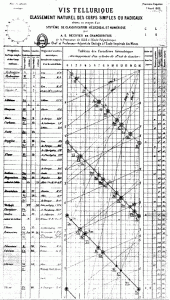One of the librarians at Washington University played this video for our students. It was a great supplement to their lesson on how to use the internet for research.
Category: video
The Last 100 Years: World History as Seen from the U.S.
YouTube user derDon1234 has compiled an interesting video montage of historical events over the last 100 years. derDon1234 makes some interesting choices about what to show — condensed into 10 minutes — but it’s a valuable perspective, with some fascinating and poignant video. It’s worth a look.
2012: Not the End of the World
I’ve fielded the question about if the world is going to end in 2012. My first-order answer has been to cite the poor level of success that previous predictions of apocalypse have had. NASA has had to address the problem, while C.G.P. Grey has a nice little video explaining the sources of the hysteria (he’s not very happy with the History Channel).
Stop-Motion Recipe
I’ve always been in favor of alternate means of presenting information, especially for recipes.
Stop-Motion Biscuit Cake from Alan Travers on Vimeo.
(via The Dish)
Electron Shells
Brian Cox explains (on the BBC) explains how electron shells are like standing waves, and how that relates to the sizes of atoms, and explains why atoms are mostly space.
Slingshot Physics
Slingshots came up the other day in physics when we were talking about tension in strings when they’re held at an angle. The larger the angle the greater the tension in the string, which is why it’s harder to do pullups on an overhead bar when your hands are spread apart.
The concept of elasticity also came up. It is the elasticity of the rubber band, its ability to return to its original shape, that provides the potential energy when you pull it back.
Smarter Every Day has a video up that glances at the physics of slingshots.
One of the neater things the video shows is one experiment where they were aiming for a pumpkin but missed. The shot went too low, knocking the piece of wood the pumpkin was sitting on, and practically all the momentum of the shot was transferred to the wood: the shot looses all its velocity while the wood takes off. Once its support is gone, the pumpkin just drops vertically — there’s no horizontal motion — making this also a good demonstration of inertia.
The History of the Periodic Table

Spurred by Philip Stewart‘s comment that, “The first ever image of the periodic system was a helix, wound round a cylinder by a Frenchman, Chancourtois, in 1862,” I was looking up de Chancourtois and came across David Black’s Periodic Table Videos. They put things into a useful historical context as they explore how the patterns of periodicity were discovered, in fits and starts, until Mendeleev came up with his version, which is pretty much the basis of the one we know today.
The cylindrical version is pretty neat. I think I’ll suggest it as a possible small project if any of my students is looking for one. You can, however, find another interesting 3d periodic table (the Alexander Arrangement) online.
The Case Against the Electoral College
C.G.P Grey makes the case against the Electoral College in video form. He starts with how the Electoral College Works and continues with a well reasoned polemic against it: he’s big into democracy — one person, one vote.